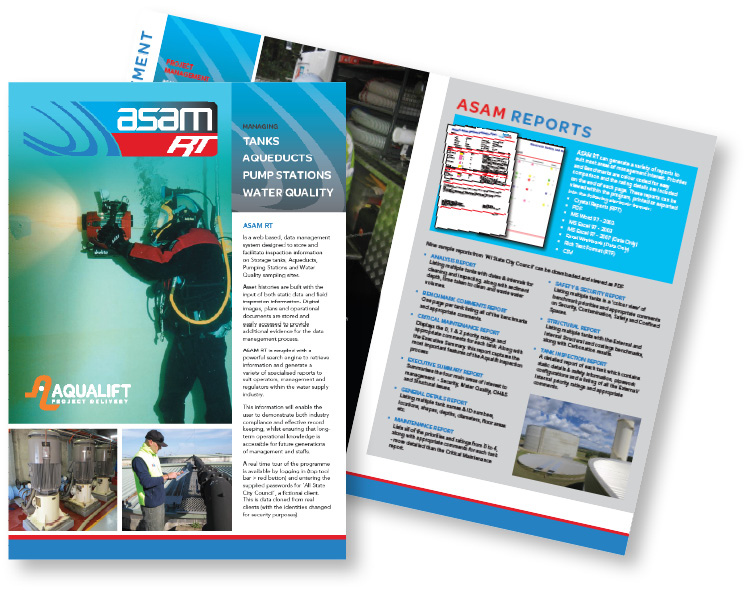Author: aqadmin
Aqualift Reservoir Maintenance Specialists
Aqualift Platform Renovations
Aqualift ASAM
Aqualift Consulting Services
Aqualift RAP Your Water Assets
Tank Design 1
Tank Design 1: Tanks built today need to meet future WH&S requirements, provide long term value for money and be adaptable to service area needs and volumes. Allow for future renovations and ongoing maintenance.
Safety Screens
Safety Screens: Installing screens on tank outlets enables diver cleaning to be conducted safely whilst tanks remain on-line. Well designed and fitted screens also prevent sediments from entering the downstream reticulation system.
Stale water: Divers can determine when the water inside tanks is not turning over as required. Evidence within sediment layers, algae deposits on walls and poor flow direction as shown by staining or sediment patterns on the floor.
Water within storage tanks
Water within storage tanks needs to be constantly moved about and blended to maintain quality and disinfection residuals. Internal pipework configurations will not always achieve these outcomes, so addition mixing by mechanical means is desirable.
There are many options available, along with various claims of performance and outcomes.
The ‘KIS principle’ (keep it simple) is often overlooked in the process, but there are simple things that can be done to improve water quality and they can also be reasonably priced and easy to maintain.
Cathodic Protection 1, 2
Cathodic Protection 1: Choosing the right time to install CP is a considered process. Too early in a tanks life, is wasting resources – too late and CP is merely a ‘band-aid solution’ to corrosion damage already done.
Cathodic Protection 2: Designing a CP system correctly to optimise the coverage and work in with the internal features is the key to successful CP protection.






